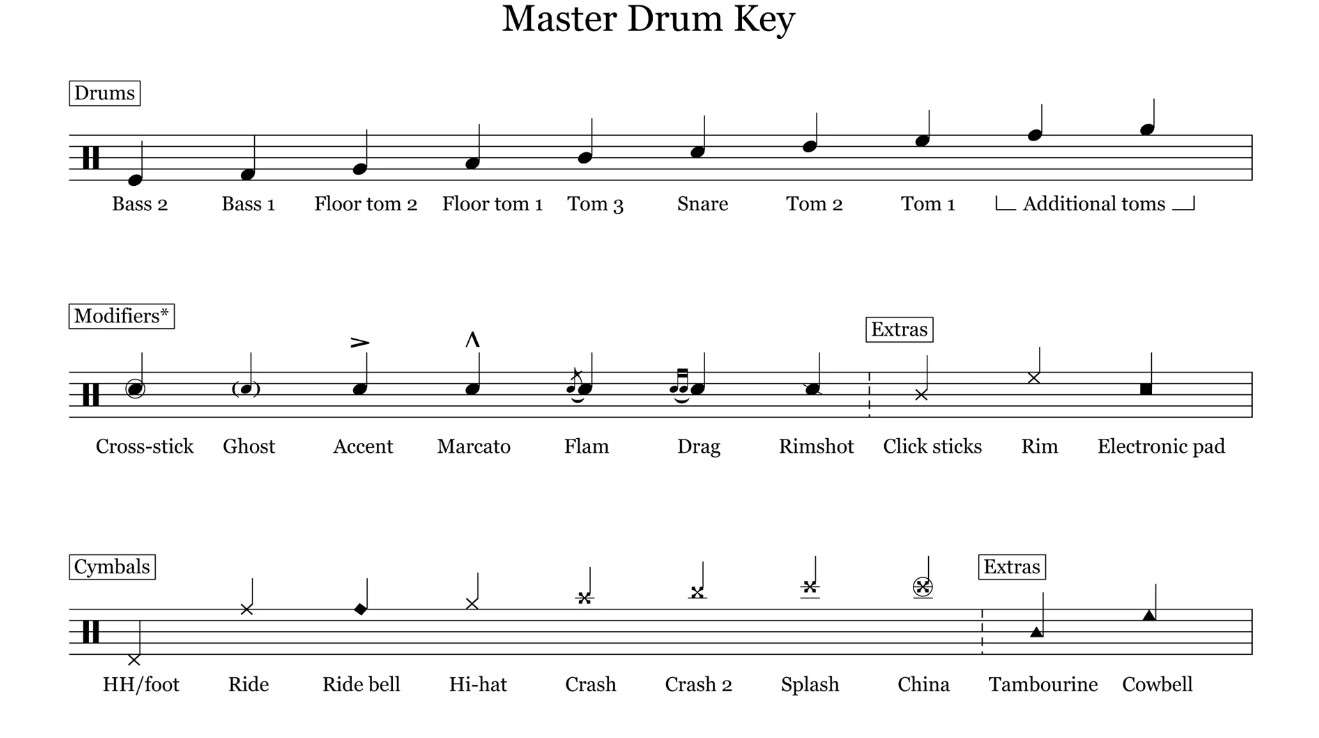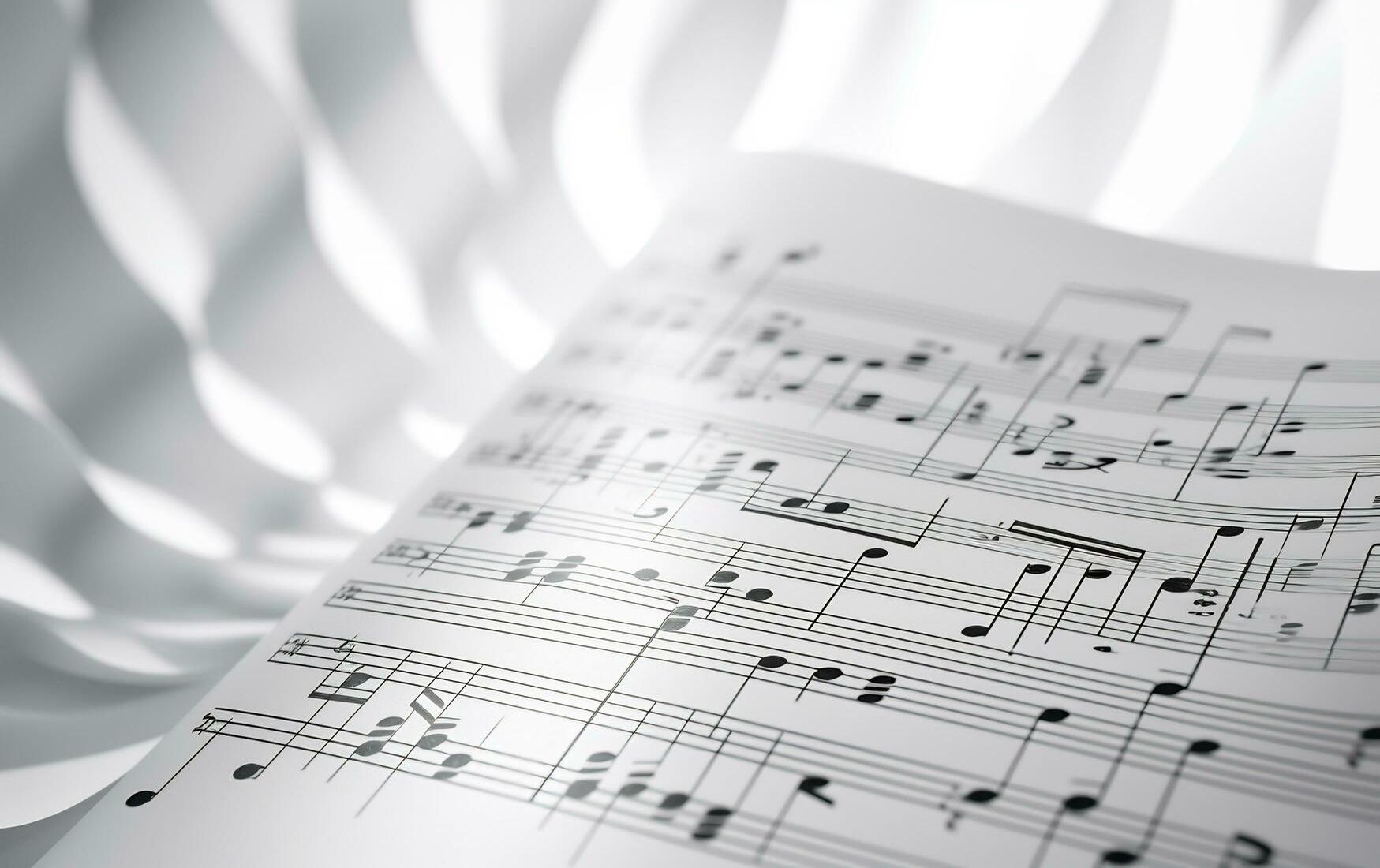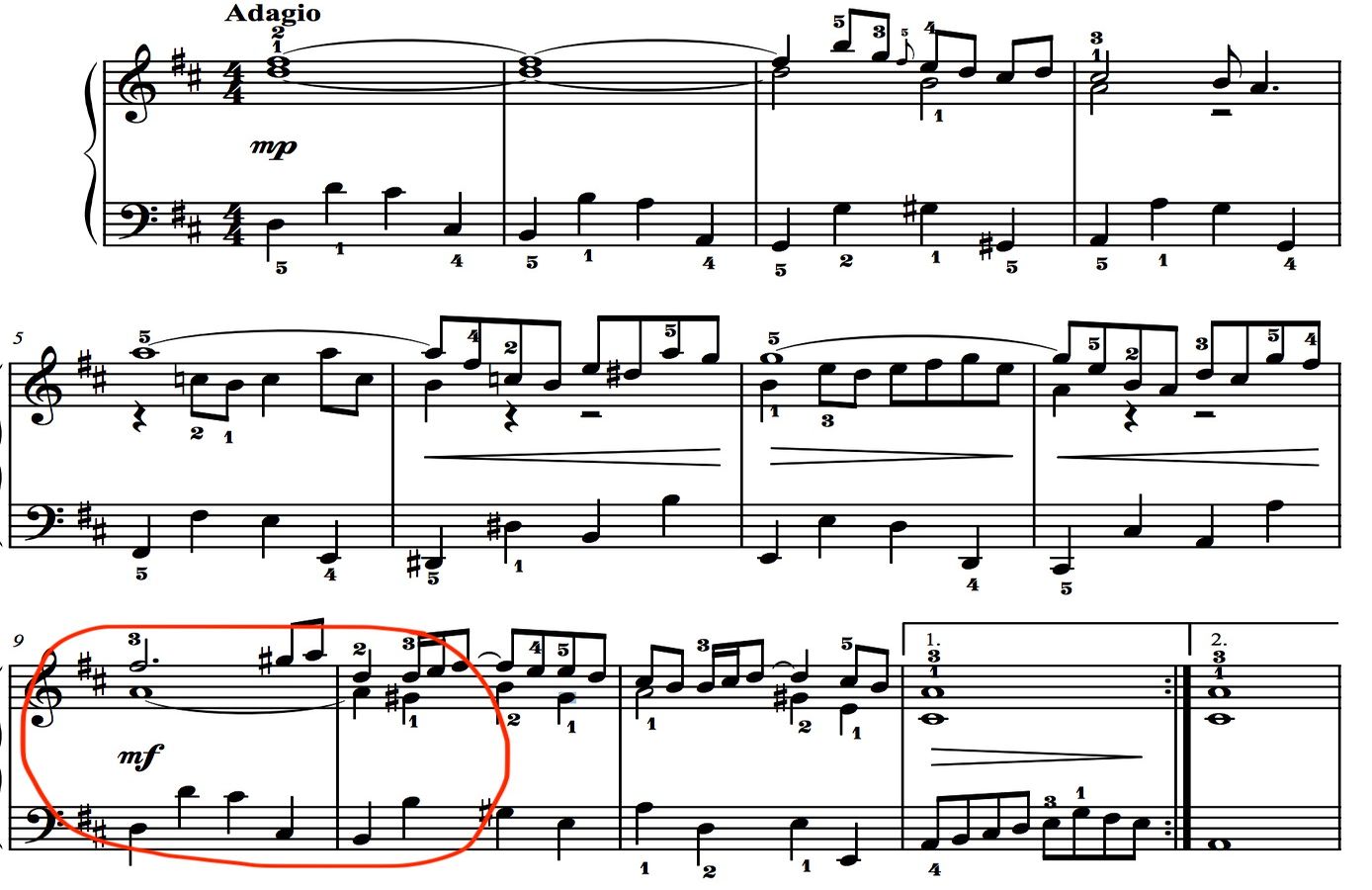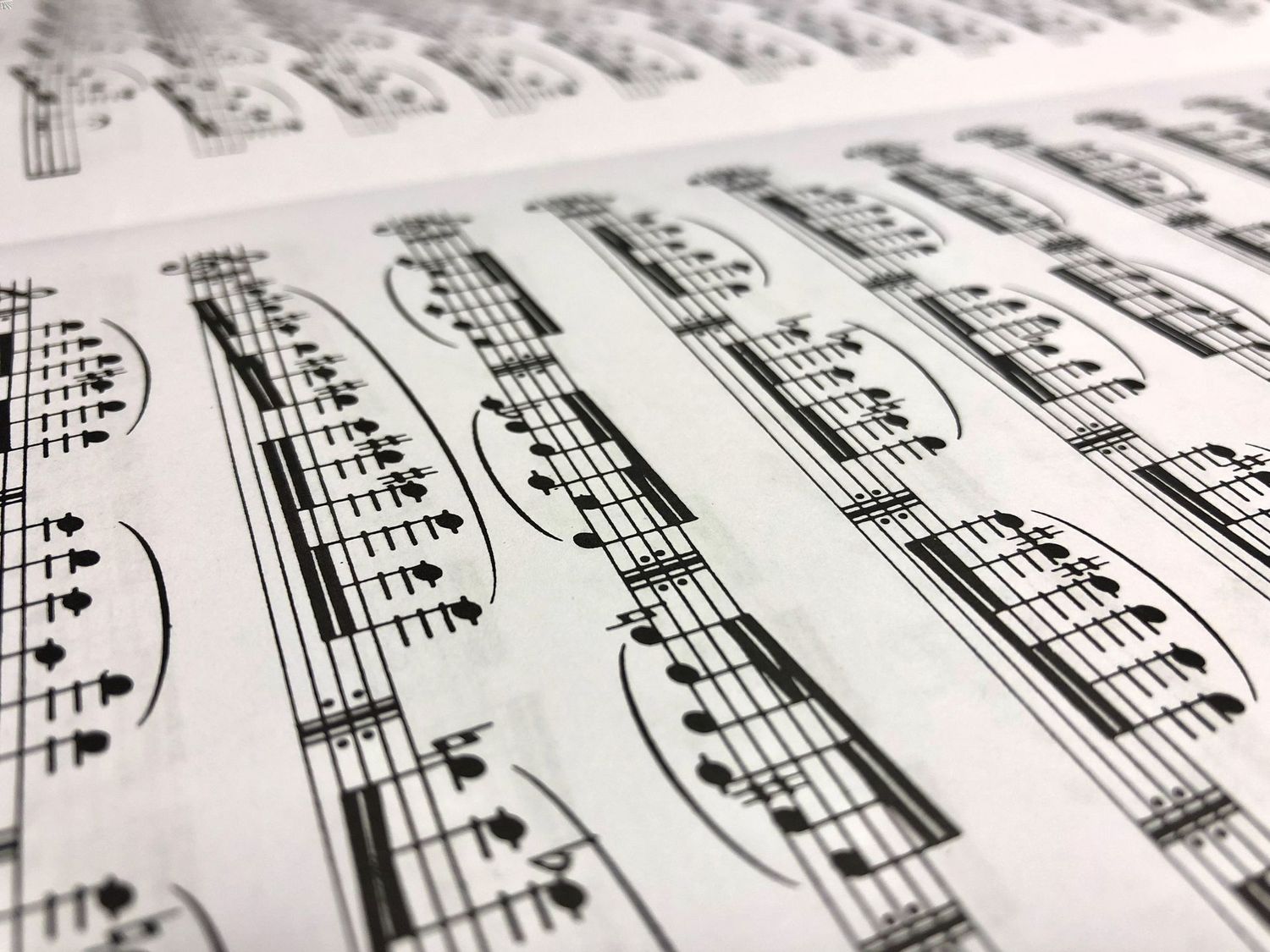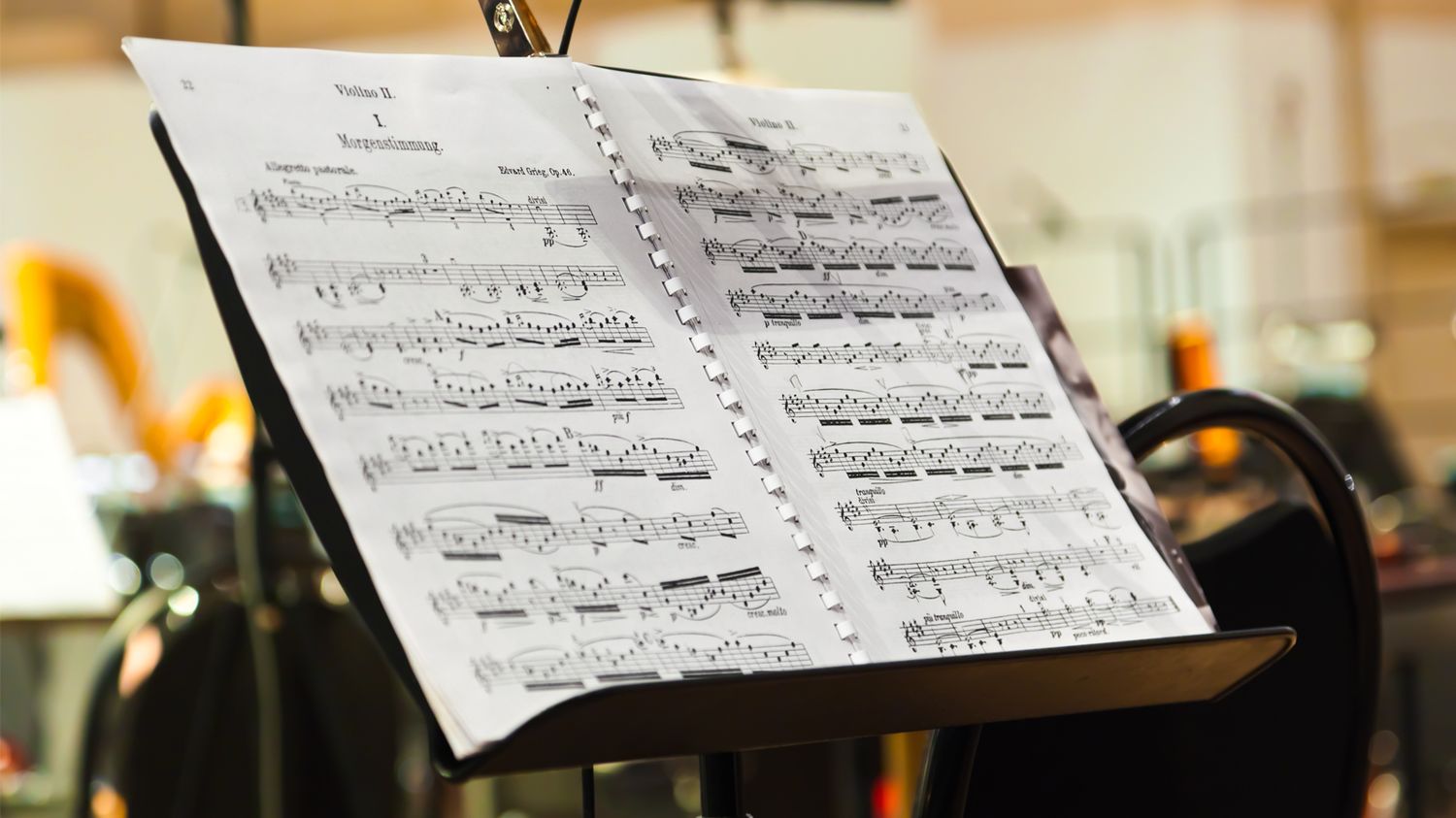Home>Events & Info>Note>What Is A Ghost Note In Sheet Music
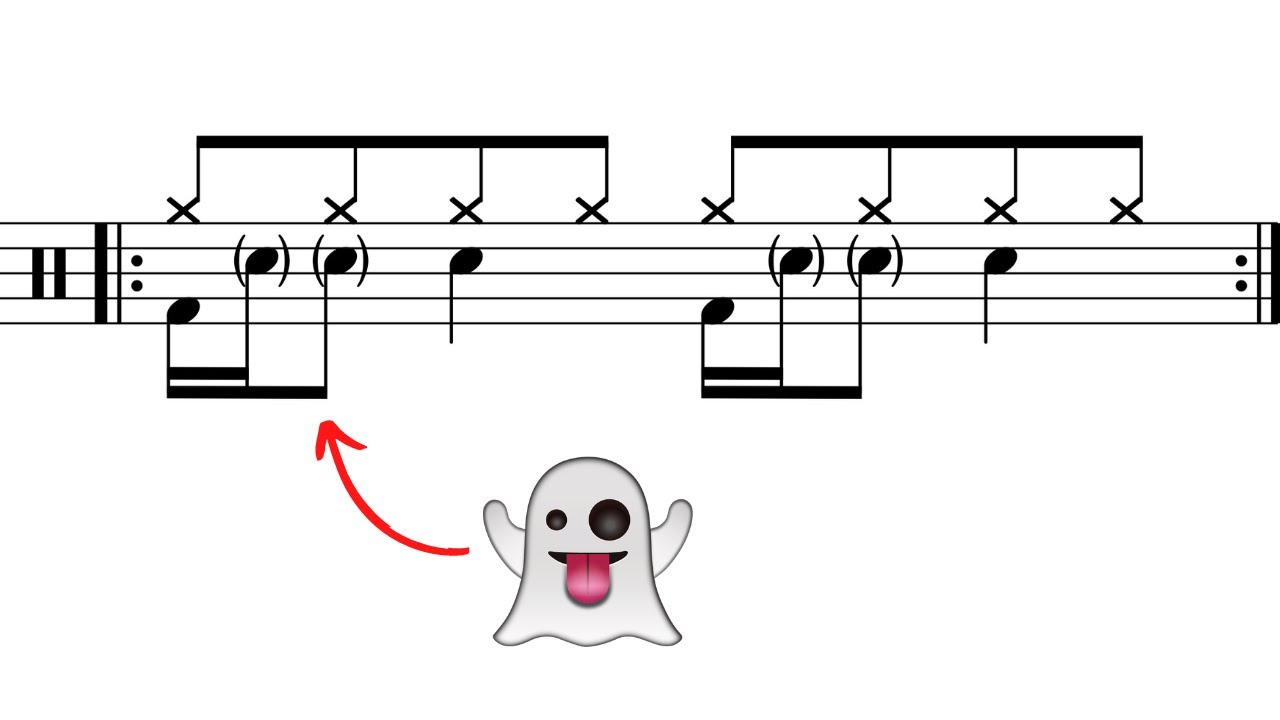

Note
What Is A Ghost Note In Sheet Music
Published: December 5, 2023
Learn what a ghost note is in sheet music and how it affects the overall composition. Explore the significance of this musical technique.
(Many of the links in this article redirect to a specific reviewed product. Your purchase of these products through affiliate links helps to generate commission for AudioLover.com, at no extra cost. Learn more)
Table of Contents
Introduction
Welcome to the enchanting world of sheet music! Whether you’re an aspiring musician or a seasoned performer, understanding the intricacies of sheet music is vital to unlocking the true potential of a musical composition. One fascinating aspect of sheet music is the concept of ghost notes. These elusive and nuanced elements add depth, flavor, and complexity to a piece, captivating the listener’s ear with their subtle presence.
Ghost notes may sound mysterious, but they are an essential element of musical expression. In this article, we will explore the concept of ghost notes in sheet music, shedding light on their definition, characteristics, notation, and techniques for playing them. We will also dive into some musical examples that showcase the importance and impact of ghost notes in various genres.
So, sit back, grab your favorite instrument or simply your curiosity, and join us as we unravel the secrets of ghost notes in sheet music. Prepare to be captivated by their ethereal beauty and discover how they can elevate your musical performances to new heights.
Definition of Ghost Notes
Ghost notes, also known as dead notes or false notes, are subtle and percussive sounds produced on a musical instrument that add texture and rhythm to a piece of music. Unlike regular notes, which have a clear pitch and duration, ghost notes are typically quieter and more muted, almost resembling a percussive sound rather than a distinct pitch.
Ghost notes are often used in genres such as funk, jazz, and R&B, where rhythmic complexity and groove play a significant role. They create a sense of syncopation, adding a layer of intricacy to a musical passage and giving it a unique feel. These notes are “ghostly” in nature, as they are not meant to be heard as individual pitches but rather contribute to the overall rhythmic pattern of a composition.
The term “ghost notes” originated from the practice of playing muted or dampened strings on stringed instruments, such as guitar or bass. When these strings are struck, they produce a soft, percussive sound that is more subtle than a regular note. This effect is achieved by lightly touching the strings with the fingers or utilizing techniques like palm muting or muting with the flesh of the hand.
Besides stringed instruments, ghost notes can also be produced on other instruments like drums, where they involve dampening or striking the drumheads lightly with a brush or using the snare drum wires in a loose or muted fashion.
The purpose of ghost notes is to enhance the rhythmic drive and groove of a musical piece. They act as intricate rhythmic embellishments, creating a sense of anticipation and tension that makes the music more vibrant and engaging. By incorporating ghost notes into a composition, musicians can add a layer of complexity and expressiveness that elevates the overall musical experience.
Characteristics of Ghost Notes
Ghost notes possess several distinctive characteristics that set them apart from regular notes in sheet music. Understanding these characteristics is essential for accurately interpreting and playing ghost notes:
- Subtlety: Ghost notes are intentionally played with reduced volume and muffled resonance. They are meant to be subtle and blend into the overall rhythm of the composition, rather than standing out as individual pitches. This subtlety adds depth and complexity to the music.
- Muted or dampened sound: Ghost notes often have a muted or dampened sound compared to regular notes. This effect is achieved through various techniques, such as lightly touching or muting the strings on stringed instruments or striking drums or percussion instruments in a muted fashion.
- Percussive nature: Ghost notes give off a percussive sound, similar to a drumbeat. They contribute to the rhythmic pattern and groove of a composition, adding a layer of complexity and enhancing the overall rhythmic drive.
- Syncopation: Ghost notes are frequently used to create syncopation in music. Syncopation refers to placing accents or emphasis on off-beats or weak beats. By incorporating ghost notes in strategic places, musicians can create unique rhythmic patterns that add an element of surprise and interest to the music.
- Transience: Ghost notes are typically short in duration, allowing them to seamlessly blend with the surrounding notes and rhythms. They serve as transient embellishments, enhancing the flow and dynamics of the music without overpowering the melody or harmony.
By understanding and embracing these characteristics, musicians can effectively bring out the essence of ghost notes in their performances. Mastery of subtle dynamics and precision in timing are crucial in order to execute ghost notes with finesse and enhance the overall musical expression.
Notation of Ghost Notes
When it comes to notating ghost notes in sheet music, there is no standardized universal symbol. However, there are several common methods used to indicate their presence. The specific notations may vary depending on the instrument and the preferences of the composer or arranger.
One common way to indicate ghost notes is by placing parentheses around the notehead. For example, a regular note would be notated as a solid notehead (e.g., ♩), while a ghost note would be enclosed in parentheses (e.g., (♩)). This parenthesized notation provides a clear visual cue to the musician that the note is to be played as a ghost note.
In some cases, a small “x” might be placed above or below the notehead to indicate a ghost note. This is particularly common in drum notation, where ghost notes are often played on various parts of the drumset.
Another way to notate ghost notes is by using specific text or symbols within the score. For instance, the term “ghost note” might be written above or below the staff to indicate that certain notes are to be played with a muted or dampened sound. Additionally, composers or arrangers may use words like “soft” or “muted” to convey the intention of playing the note as a ghost note.
While there is no standardized notation for ghost notes, it is crucial for musicians to communicate their interpretation of the ghost notes with clear markings or instructions. This helps ensure that performers understand the intention behind playing the ghost notes and can accurately reproduce the desired effect in their performance.
It’s important to note that in some cases, ghost notes may not be notated at all, and performers may rely on their understanding of the piece’s style and context to determine when to incorporate ghost note techniques. This is particularly true in genres like jazz and improvisational music, where the interpretation and expression of the performer play a significant role in shaping the music.
Techniques for Playing Ghost Notes
Playing ghost notes requires a specific technique to achieve the desired effect of subtle, muted, and percussive sounds. The techniques for playing ghost notes vary depending on the instrument, but here are some common approaches:
- Stringed Instruments: On stringed instruments like guitar or bass, ghost notes are often produced by lightly touching the strings with the fingers while plucking or strumming. This can be done by lightly resting the fingers on the strings without fully pressing them down to the fretboard, resulting in a muted or dampened sound. Techniques like palm muting or muting with the flesh of the hand can also be employed to achieve ghost notes.
- Drums and Percussion: Ghost notes on drums involve striking the drumheads or cymbals softly to produce a muted sound. This can be achieved by using a lighter touch with the drumsticks or employing brushes instead of sticks. On snare drums, the snare wires can be loosened or adjusted to create a softer and more muted resonance, resulting in ghost notes.
- Wind Instruments: On wind instruments like saxophone or trumpet, ghost notes are often achieved by using air control and tonguing techniques. By using a lighter tongue stroke or adjusting the embouchure, musicians can produce subtle and breathy sounds that resemble ghost notes. Varying the air pressure and manipulating the valve or slide positions can also create ghost note effects.
- Piano and Keyboard Instruments: Ghost notes on piano or keyboard instruments are produced by playing the keys with a lighter touch and subtly damping the sound. This can be achieved by partially depressing the keys or using the fingers to brush the keys instead of fully striking them. The use of the sustain pedal can also create a sense of subtlety and decay in the notes.
Mastering the techniques for playing ghost notes requires practice, precision, and a keen ear for subtlety. It involves developing control over dynamics, touch, and timing to achieve the desired effect. By experimenting with different techniques and exploring the nuances of their instrument, musicians can unlock the true potential of ghost notes and incorporate them seamlessly into their performances.
Musical Examples of Ghost Notes
Ghost notes are employed in various musical genres to add depth, rhythm, and groove to compositions. Here are a few notable examples of ghost notes in different styles of music:
1. Funk: Funk music heavily relies on the rhythmic interplay between instruments, and ghost notes play a crucial role in creating the genre’s signature groove. In songs like “Superstition” by Stevie Wonder or “Give Up the Funk” by Parliament, you can hear the snare drum producing subtle and muted ghost notes, enhancing the syncopated rhythm and driving the funky feel.
2. Jazz: Jazz musicians often incorporate ghost notes to add complexity and texture to their improvisations. In songs like “Blue Train” by John Coltrane or “So What” by Miles Davis, you can hear saxophonists and trumpet players using breathy, muted sounds to create ghost notes that weave in and out of the main melodic lines, adding emotion and intrigue.
3. R&B and Soul: Ghost notes are commonly found in R&B and soul music, working in tandem with the vocals and rhythm section to create a mesmerizing groove. In tracks like “Respect” by Aretha Franklin or “I Heard It Through the Grapevine” by Marvin Gaye, the bass guitar and drums utilize ghost notes to create a tight, rhythmic foundation, providing a subtle and funky undertone to the songs.
4. Latin and Afro-Cuban music: Ghost notes are essential in capturing the intricate polyrhythms and syncopated grooves of Latin and Afro-Cuban music. In pieces like “Manteca” by Dizzy Gillespie or “Oye Como Va” by Tito Puente, percussion instruments like congas and bongos utilize ghost notes to add depth and complexity to the intricate rhythmic patterns, infusing the music with energy and excitement.
5. Rock and Pop: While not as prevalent as in other genres, ghost notes can still be found in rock and pop music, subtly enhancing the rhythmic drive. In songs like “Seven Nation Army” by The White Stripes or “Billie Jean” by Michael Jackson, you might hear guitarists incorporating ghost notes between chord stabs or drummers using muted snare hits to add dynamics and create interesting rhythmic accents.
These are just a few examples of how ghost notes are used to enhance the musical experience across different genres. The incorporation of ghost notes adds depth and intricacy, elevating the rhythm and groove of a composition, and showcasing the artistry and creativity of the musicians involved.
Importance of Ghost Notes in Sheet Music
Ghost notes may appear subtle, almost unnoticeable at times, but their presence is crucial in sheet music for several reasons:
1. Rhythm and Groove: Ghost notes contribute significantly to the rhythm and groove of a piece. By adding subtle percussive elements and syncopated patterns, they create a sense of depth and complexity that enhances the overall rhythmic drive. Ghost notes help establish the groove, making the music more engaging and compelling for listeners.
2. Expressiveness and Dynamics: Ghost notes add to the expressiveness and dynamics of a musical composition. They provide a way for musicians to inject subtlety, nuance, and personal interpretation into their performances. By selectively incorporating ghost notes, performers can add emotional depth and enhance the overall musical expression.
3. Texture and Layering: Ghost notes contribute to the overall texture and layering of a piece. They provide an additional dimension and complexity to the music, filling in the spaces between the main melody or chords. By blending ghost notes with regular notes, musicians create a rich, multi-dimensional sound that captivates the listener’s ear.
4. Syncopation and Tension: Ghost notes are essential for creating syncopation and tension in music. By placing accents on off-beats or weak beats, ghost notes introduce unexpected rhythms and contribute to the overall rhythmic complexity. This syncopation adds excitement, intrigue, and a sense of anticipation, making the music more interesting and captivating.
5. Genre-specific Styles: Ghost notes are especially prevalent in certain genres like funk, jazz, and R&B, where rhythm and groove are paramount. They contribute to the unique stylistic elements of these genres, shaping the characteristic sound and feel. Mastering ghost notes is essential for musicians wishing to authentically convey the essence and soul of these musical styles.
6. Collaborative Playing: Ghost notes foster a sense of collaboration and communication among musicians. Playing ghost notes requires attentiveness to the overall rhythmic context and the ability to align with other musicians in the ensemble. It encourages active listening, coordination, and a cohesive performance, leading to a more cohesive and powerful musical experience overall.
In summary, ghost notes are not merely subtle embellishments, but integral components of sheet music. They contribute to the rhythm, groove, expressiveness, and texture of a composition, enhancing its overall impact. By carefully incorporating and interpreting ghost notes, musicians can elevate their performances, creating music that resonates deeply with both themselves and their audience.
Conclusion
In the world of sheet music, ghost notes are the ethereal gems that add depth, rhythm, and groove to musical compositions. Through their subtle presence, ghost notes enhance the overall musical experience, captivating listeners with their percussive nature and intricate rhythms.
Understanding the definition, characteristics, notation, and techniques for playing ghost notes is essential for musicians striving to elevate their performances. These subtle and muted sounds, often found in genres like funk, jazz, and R&B, create a sense of syncopation and add layers of complexity to the music. Through their transience and subtlety, ghost notes contribute to the expressiveness, dynamics, and textural richness of a composition.
While ghost notes are not always explicitly notated, their importance cannot be understated. Musicians who master the art of incorporating ghost notes bring a new level of rhythmic drive and groove to their performances, breathing life and emotion into their music.
As we journeyed through the world of ghost notes, we explored various musical examples that showcased their versatility across different genres. From funk to jazz, from Latin to rock, ghost notes influenced the music, providing a rhythmic foundation and creating moments of tension and excitement.
Remember, ghost notes go beyond the written sheet music; they are a catalyst for artistic expression and collaboration among musicians. The ability to tastefully employ ghost notes requires attentiveness, coordination, and a keen ear for subtleties.
So, embrace the ghost notes in your musical journey. Whether you’re a guitarist, drummer, pianist, or any instrumentalist, let these mysterious sounds intertwine with your playing, shaping rhythm, texture, and emotion. Allow the ghost notes to add complexity and intrigue, transforming ordinary compositions into extraordinary musical experiences.
With each ghost note played, the music comes alive, captivating the audience and leaving a lasting impression. So, explore, practice, and enjoy the beauty that lies within the enchanting world of ghost notes.

